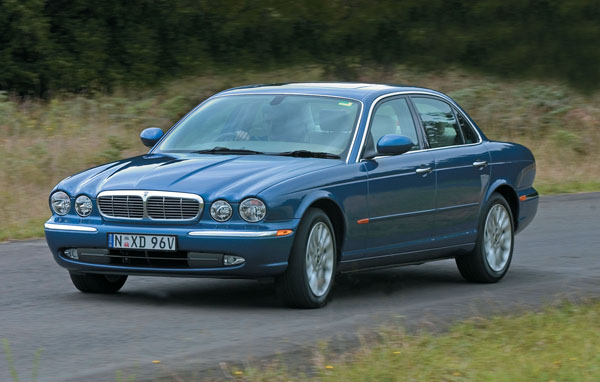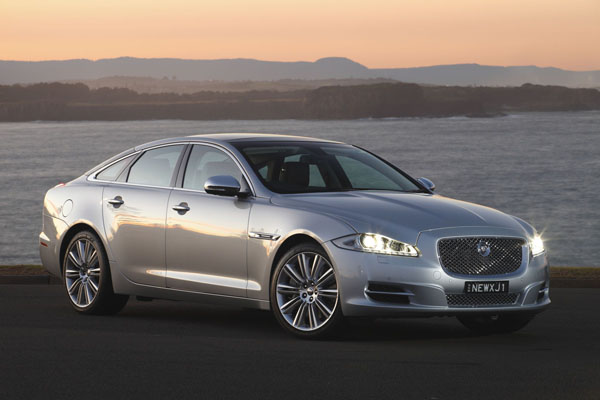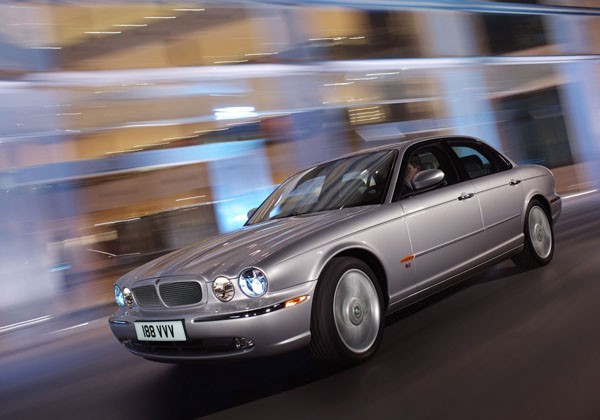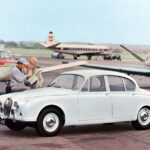The XJ Jaguar is a British sports saloon that can be divided into three quite different stages in its recent history. Those built until July 2003 had traditional styling that looked great and made a real statement both inside and out. These are getting on in years, but those who love Jags swear by them. Though their age, combined with quality control that wasn’t the best, could cause hassles.
The 2003 restyle kept many of the established lines, but now moulded onto an aluminium body to significantly reduce weight and increase performance. As these are sports saloons this added performance was welcomed by those who liked to make good use of their right foot.
However, in the eyes of many this combination of a high-tech body and a traditional shape wasn’t appealing. The cars still sold reasonably well, but the murmurs about ‘old-fashioned’ styling became stronger over the years.
The all-new 2010 model silenced the critics by taking an altogether different direction in styling with sleek futuristic lines. Externally, the ‘Jaguar grille’ was the only major carryover from the past, but the dash area has some carries over from the past. Naturally, its aluminium body retained the added performance and nimble(-ish) feel of the outgoing XJ.
Die-hard Jaguar enthusiasts snapped up the last of the traditional leather-and-wood-cabin models, even today there’s a call for them so you may be asked to pay fairly big bucks to get into the best of them.
Though the big emphasis on the 2010 series was its ultra-modern styling and the interior of most cars reflected this, there are traditional leather-and-wood options – the best of both worlds some say.
A drawback in the older Jaguars, is the lack of interior space in the standard-wheelbase car due to the fact that it’s a low-slung sports saloon, not as tall sedan. This is at its worst in the back seat, but even the front seats can prove cramped for foot-space due to the large transmission housing. The long-wheelbase variants (look for an ‘L’ in the title) are much better for rear legroom, but can still be tight in headroom for taller occupants.
Post 2010 XJs have more voluminous interiors, but check out the back seat if you are planning to carry tall adults on a routine basis.
The number in a Jaguar XJ’s title refers to the number of engine cylinders; thus XJ6 has six of them and XJ8 is a V8, and the XJ12 … you’ve guessed it.
Supercharged V8s of 4.2 and 5.0 capacity installed in the XJ R upmarket hotrods are intended for the keen driver who really wants to let of steam.
Turbo-diesel would have been unthinkable in Jaguars prior to the revolutionary, new-design oil burners introduced towards the end of the 20th century. In April 2007 Jaguar introduced its first passenger car diesel to Australia. There’s the seemingly inevitable diesel engine noise at idle, particularly when the engine’s cold, but from inside it’s virtually as smooth and quiet as a petrol unit. And has bags of torque.
Reliability used to be a weak point in Jaguars, though after Ford in the USA bought the company in the early 1990s the Brits were given a major shake up. By the launch of the 1994 XJ Jaguar there were major improvements.
As of mid-2008 Jaguar has been controlled by Indian company Tata. The Indians have an excellent understanding of English tradition. Indeed, they can be more English than the English, so the traditional British marque looks is in good hands, with the engineers and stylists being left alone to do what works best for their aluminium babies.
Servicing, spare parts and insurance costs are all on the high side so don’t fall for the trap of putting all your money into buying the car and then finding yourself unable to keep it in the manner in which it is accustomed.
WHAT TO LOOK FOR
Make sure the engine starts easily and idles smoothly and quietly. On your road test be sure it doesn’t hesitate and there are no smoke fumes from the exhaust.
Check that the brake fluid has been changed on schedule. Not doing so can lead to expensive troubles.
On pre-2003 Jags be sure all electrical items are working properly. Intermittent as these can be frustratingly hard to track down, but if you suspect anything bear with it as repairs can be expensive.
Watch out for an automatic transmission that’s slow to go into gear and/or which hunts from gear to gear unnecessarily. Hill climbing for an extended distance usually brings out this fault.
Jaguars used galvanised steel body panels, until mid 2003 then switched to weight-saving aluminium. The galvanised steel variants should be rust free unless they have been incorrectly repaired after a crash.
Damaged aluminium panels may have to be repaired by a specialist so be sure to get a quote from an expert, even for the smallest of dents.
CAR BUYING TIP
Enthusiasts of a marque can be an excellent source of information on their cars’ strong, weak and interesting points. Try to find a local owners’ club and chat to members.












